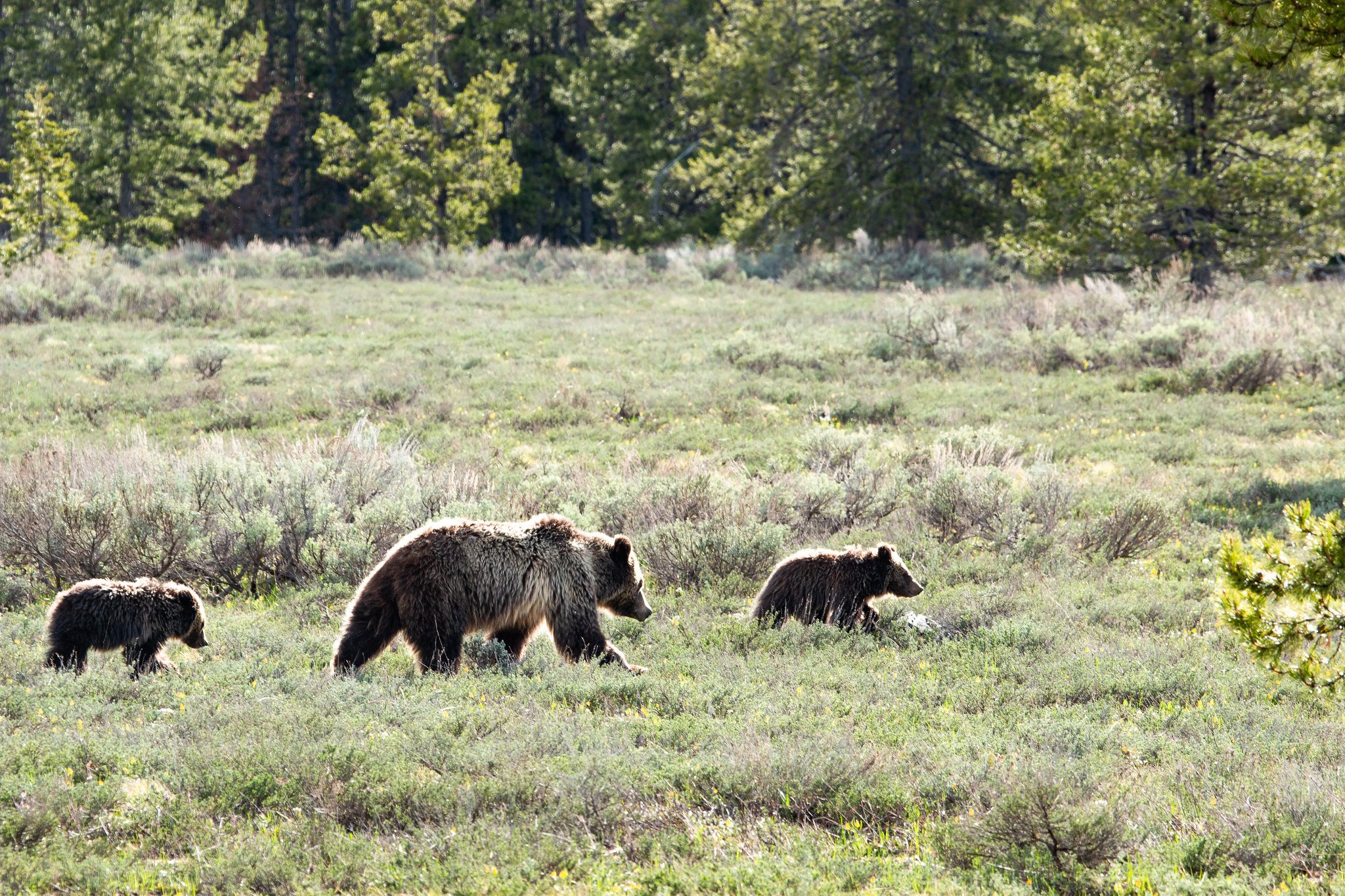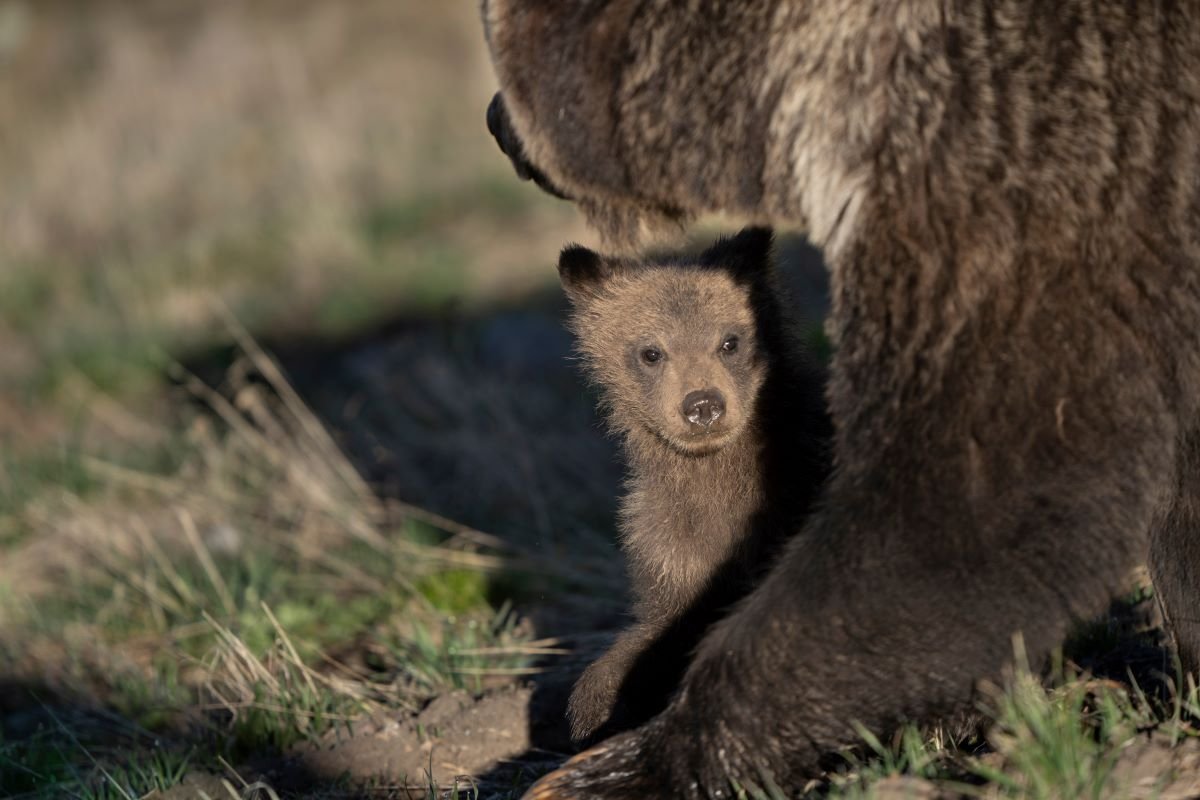GYC prepares to implement new grizzly bear conflict prevention projects in Wyoming
Grizzly bears are the wild icons of this remarkable ecosystem. As a wide-ranging omnivore, grizzlies play a vital role in maintaining the health of Greater Yellowstone. To ensure their longevity and stability, the Greater Yellowstone Coalition (GYC) is committed to seeking new opportunities for preventing conflicts with humans. For 2023, our wildlife team identified several such projects within Wyoming, including helping fund a bear-proof dump trailer for dealing with campground garbage in the Shoshone National Forest and helping facilitate a range-rider study with local ranchers to help landowners better understand bear behavior.
As the human population within the Greater Yellowstone Ecosystem (GYE) continues to increase and core grizzly bear habitat is occupied, conflict between people and bears is an increasing concern for all who live, work, or recreate in bear habitat. Because grizzlies so embody the spirit of the GYE, their survival and long-term viability is a priority for both GYC and people across the globe who love this ecosystem. Efforts to reduce potential conflicts can have dramatic impacts on both bear survival, human safety, and the perception of grizzly bears that people in closest contact with these icons may have.
A sow grizzly bear and her cubs in Grand Teton National Park. Grizzly bears represent a healthy Greater Yellowstone and symbolize the wild heart of the region more viscerally than perhaps any other species. (Photo NPS)
To survive on the landscape, grizzly bears need two things in abundance: vast tracts of secure habitat and widely available seasonal food sources. In this sense, grizzly bears are an indicator of ecosystem health; they represent the Greater Yellowstone functioning at full capacity. As opportunistic omnivores, grizzly bears can act in various capacities as apex predators, scavengers, or herbivores dramatically impacting nutrient cycling, seed dispersal, and prey species abundance across broad swaths of habitat.
As grizzly bears continue to expand their range into suitable landscapes in the GYE, the southern Wind River Range is now occupied grizzly territory. Topping out at an elevation above 9600 feet, the “Loop Road” connects the city of Lander, Wyoming to South Pass while crossing the Washakie district of the Shoshone National Forest. Acting proactively, the Forest Service contacted GYC about helping to fund a bear-secure dump trailer system to help manage garbage at several Shoshone National Forest-managed campgrounds along the Loop Road. When campgrounds become known sources of food, the result is deadly for bears and dangerous for people. Securing attractants before a problem is established prevents future conflicts and allows continued range expansion of bears into appropriate landscapes. Partnering with the Forest Service and other wildlife-focused NGOs, GYC will be taking delivery of this system and donating it to the Forest for use during the summer 2023 campground season.
While some conflicts with bears can be easily mitigated, there are others that are more difficult to manage. Preventing grizzly bear depredations on livestock is a long-term effort that has required the joint energies of livestock producers, NGOs, researchers, and management agencies. Bears that prey on open ranging cattle are much more likely to be targeted for agency removal than their counterparts, and the loss of livestock represents substantial economic cost to producers. Strategies to prevent these conflicts range from fencing improvements, to grazing practices that limit depredation opportunities for bears, to livestock carcass management and increased vigilance on the part of the livestock producer. GYC is currently providing funding to researchers aiming to quantify the impact of range riders (cowboys that keep watch on cattle during the grazing season) on the risk of cattle depredation by grizzly bears, as well as helping to facilitate the inclusion of ranches with high levels of grizzly bear conflict into this study. The results will offer insights into bear behavior, and hopefully provide an effective strategy to prevent conflicts with demonstrated success.
A grizzly bear cub in the Bridger-Teton National Forest. For 2023, GYC’s wildlife team identified several such projects within Wyoming, including helping fund a bear-proof dump trailer for dealing with campground garbage in the Shoshone National Forest and helping facilitate a range-rider study with local ranchers to help landowners better understand bear behavior. (Photo Danita Delimont)
Grizzly bears represent a healthy Greater Yellowstone and symbolize the wild heart of the region more viscerally than perhaps any other species. Working for grizzly bear conservation involves more than legal and management protections – it includes designing and implementing strategies that prevent the likelihood of conflicts between bears and people where our interests intersect. GYC is committed to working for a healthy and connected grizzly bear population across the northern Rockies, and we are excited to be involved in projects that will help make that vision a reality.
A huge thank you to our donors and advocates for supporting our grizzly bear conservation work in Greater Yellowstone. Whether you’ve donated to a bear-resistant container or taken action for sound grizzly bear policy, you strengthen our work to make certain a healthy grizzly bear population endures for years to come.
—Matt Cuzzocreo, Senior Wildlife Conservation Associate



